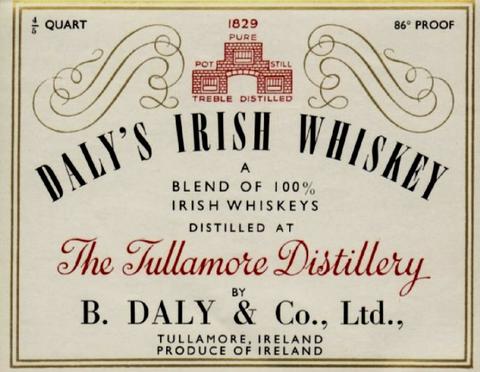Identity area
Reference code
Title
Date(s)
- 1868-1939 (Creation)
Level of description
Subfonds
Extent and medium
5 volumes in 2 boxes
Context area
Name of creator
Administrative history
Tullamore Distillery was founded by Michael Molloy in Tullamore in 1829. On Molloy’s death in 1857, the distillery passed to his nephew Bernard Daly and in 1887, his son, Captain Bernard Daly took charge.
Name of creator
Administrative history
Captain Bernard Daly took over Tullamore Distillery in 1887. Daniel E. Williams (1848–1921) who had joined the distillery in 1864 as an engineer, was promoted by Daly to General Manager of the Distillery in 1885. The distillery grew in strength and in 1903 was incorporated into the company B. Daly & Co., Ltd. The most famous brand produced was the whiskey, Tullamore DEW. Captain Daly held a portion of the shares in B. Daly & Co. Ltd., and the Williams family held the remainder. D. E. Williams died in 1921 and the business was taken over by his son, Captain John Williams. In 1931, Captain Daly resigned as director of the board and the Williams family acquired all shares in the company. In response to falling whiskey sales in the 1940s, an associate company, The Irish Mist Liqueur Co. Ltd was formed in 1948 to bring a new product to the market. In 1952, the brand name Tullamore DEW was sold to Irish Distillers Ltd, and B. Daly & Co. Ltd ceased distilling and diversified into chicken production.
Repository
Archival history
Content and structure area
Scope and content
Volumes relating to the production and sale of pot-still whiskey.
Appraisal, destruction and scheduling
Accruals
System of arrangement
Conditions of access and use area
Conditions governing access
Conditions governing reproduction
Language of material
Script of material
Language and script notes
Physical characteristics and technical requirements
Finding aids
Allied materials area
Existence and location of originals
Existence and location of copies
Related units of description
Notes area
Alternative identifier(s)
Access points
Subject access points
Place access points
Name access points
- Tullamore Distillery (Subject)


